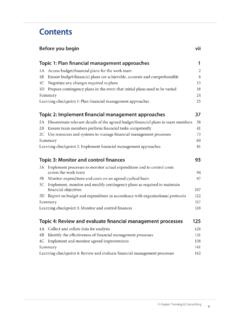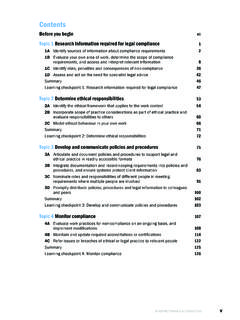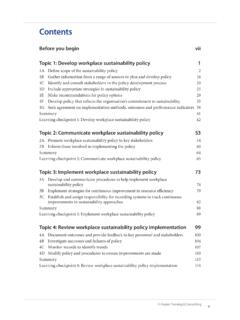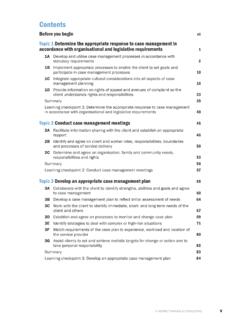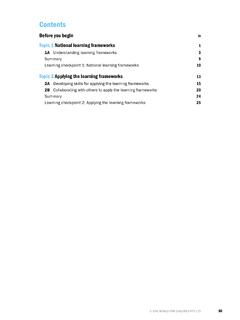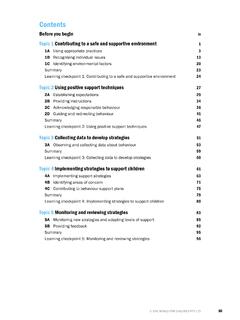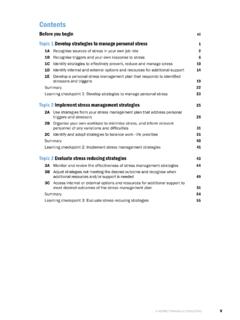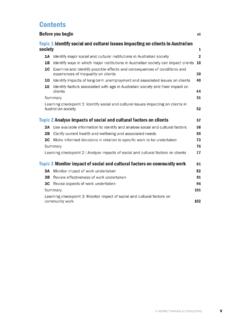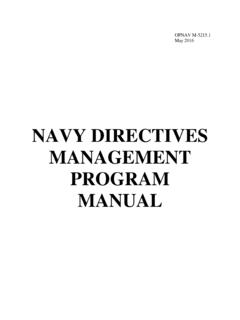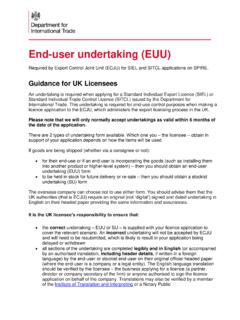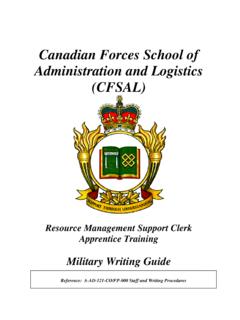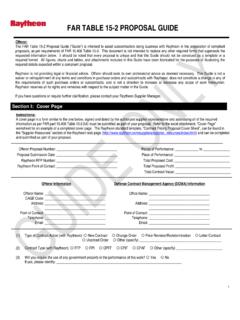Transcription of BSBWRT401 Write complex documents - Amazon Web Services
1 Aspire Training & ConsultingvContentsBefore you begin viiTopic 1: Plan documents 11A Determine the document purpose 21B Choose appropriate document format 61C Establish the means of communication 141D Determine document requirements 181E Determine content and order 261F Develop an overview of structure and content 31 Summary36 Learning checkpoint 1: Plan documents 37 Topic 2: Draft text 412A Review and organise material 422B Prepare text 442C Include graphics 462D Identify and fill information gaps 502E Draft text 532F Use appropriate language 54 Summary57 Learning checkpoint 2: Draft text 58 Topic 3: Prepare final text 633A Review draft text 643B Check for accuracy 673C Obtain approval for draft text 703D Incorporate revisions 73 Summary75 Learning checkpoint 3: Prepare final text 76 Topic 4: Produce a document 794A Choose appropriate design elements 804B Use word processing software 904C Check documents 93 Summary98 Learning checkpoint 4.
2 Produce a document 994 Aspire Training & ConsultingBS BWR T4 01 Write complex documentsAnswer purpose questions Effective communication and problem-solving skills are important to help you understand what is required for each document. Developing questions to ask about the purpose, intended audience and timing requirements for each document is one way you can develop these, as well as refining your active listening skills so that you understand the brief clearly. Here are some of the ways to find questions How you answer the questions relating to purpose depends onyour organisation, your job role and how you are initially asked to complete the document.
3 For example, you may be given a clear briefing by your supervisor or manager before you start the document. In this case, you should ask them these questions, and seek their advice on appropriate people to help you, if they do not know the answers You may need to deduce the answers to these questions basedon the data you have to include. Clarify your understanding with an appropriate member of your organisation. Review similar documents , or speak with someone who has created similar material. Your colleagues or predecessors in your position may also be able to explain how regularly documents are produced, such as sales skills Beyond deducing answers, these may include being responsiveto changing requirements or time lines relating to your document, or identifying appropriate solutions when the material you are presenting does not fit exactly with required templates or house style.
4 The more complex a document, the more likely you will need to adopt a problem-solving Aspire Training & ConsultingBS BWR T4 01 Write complex documentsConsiderations when using emailRemember to consider the file size and type of an attachment before sending it. Make sure your recipient can access the file. It is a good idea to send a separate, confirming email to ensure large files have been received. Although emails may be more casual than letters, you may be subject to some of the same requirements, such as using a standard layout or font, including marketing messages or a confidentiality clause at the end of the email.
5 Protecting privacy and maintaining confidentialityAn email displays all recipients in the to and cc fields. If you are copying in your manager, it s more courteous to use the cc field and inform other recipients. If you are sending emails to an external group, such as a customer newsletter, you may use the bcc field to protect your customers privacy. Take care when sending confidential information by email, particularly with sensitive business or customer details. For this information, you may need to use encryption or password protection. Follow your organisation s policy on what can be , instructions and proceduresManuals, instructions and procedures may be used to convey information for guiding, educating or training staff.
6 These may be standard work instructions or procedures for a department, such as how to prepare the monthly accounts, or they may be training in specific skills, such as customer-service training. Here you will find information that is relevant to the use of these work instructions and manuals business procedures are sometimes documented to conform toexternal requirements, such as ISO procedures, and you may be required to follow a template to satisfy audit requirements. This is often the case for manuals about work health and safety (WHS) or equal-opportunity material structure If you are developing training material, you should confirmwhether your organisation has a standard template .
7 This may cover layout and presentation, but may also influence the time allocated to each session before breaks are required and other structural elements. 12 Aspire Training & ConsultingBS BWR T4 01 Write complex documentsWebsite textMost organisations now display information on their websites. This is a cheap and effective way of communicating to the public. You can upload an existing document, such as an annual report, or you can develop something specifically for the are specific guidelines which need to be observed for website information, and tender information needs to specify what is required as identified s requirementsIf you are developing material specifically for the website, then you should follow the guidelines set by the web provider.
8 Some of these will influence the technical aspects of the document, such as file size, type of graphics and so on. Website text is often quite different in style from other written forms and readers tend to scan material and read on screen, rather than print and read in detail. Other guidelines may influence the actual language, fonts and logos, layout and brand presentation. Websites are an increasingly important aspect of an organisation s image, so it s important to comply with these requirementsSome common guidelines include the following: Place critical information near the topof the page. Present information in shorterparagraphs than for print materials.
9 Present information to minimisescrolling. Use a sans serif font in 12-point orlarger font size. Use bold or italic to highlight keypoints. Use bullet points, lists and graphics tosummarise task 2 organisations have an accepted house style. What is a house style ? protect the privacy of your clients, would you place their email addresses in the cc or bcc field?continued ..18 Aspire Training & ConsultingBS BWR T4 01 Write complex documentsAs part of the document planning, it s important to understand what requirements there may be. Document requirements may include content, style, general standards or file inputs, as described may need to comply with internal or external reporting guidelines, to meet audience needs, or to meet legal may need to comply with internal style guides, templates, or branding guidelines, or to Write in a particular style to suit audience may need to comply with protocols on footnotes, citations, references and so facilitate later formatting of the document.
10 You may need to collect inputs in particular file structures or with specified resolution standardsStyleFile inputsContent requirements Content requirements can be quite specific. Here is a list explaining some of the requirements you may with genreSome documents need to comply with general requirements based on what type of document it is. For example, annual reports for large companies generally include a financial summary, financial reports, a letter to shareholders, information on company operations and significant developments, and information about company officers and directorsReporting requirementsYour organisation may have made some commitments about the type of reporting it will do, perhaps to achieve a certain external certification, or as part of a public commitment.
